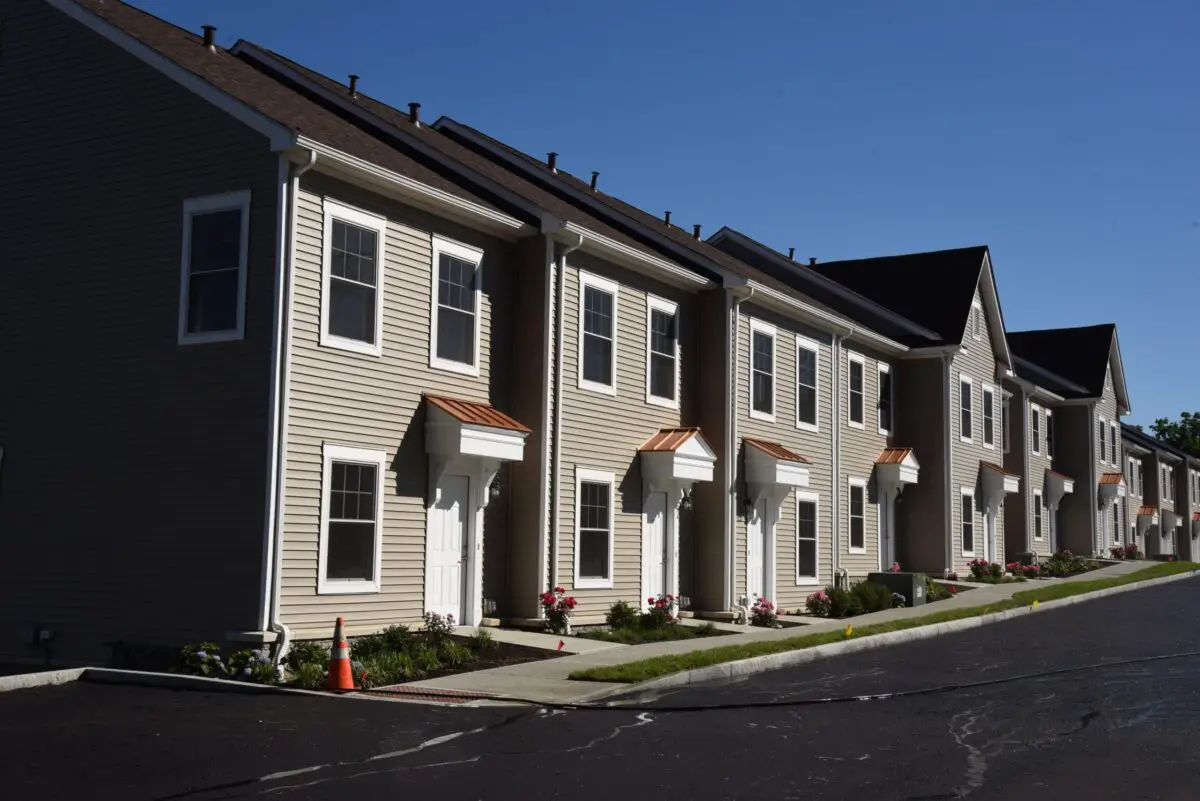Greenwich Affordable Housing Trust Fund contemplates new projects

The board of directors of Greenwich’s Affordable Housing Trust Fund met on Aug. 16 to discuss a planned public relations strategy to promote fundraising efforts designed to finance the construction of affordable housing units across the town. Press releases, appearances before the Greenwich Representative Town Meeting (RTM), and revamped web presences were addressed, all with an eye towards expanding the fund’s ability to manage the growth of affordable housing in the town.
“In Old Greenwich, where I live, there is an 8-30g project that just opened up for leasing right next to the train station,” Sally Bendar, the board’s secretary observed while discussing talking points to bring up with RTM members. “There is a buzz in our district right now about how did it get built, how did it get through, so I think this is good timing to come to our districts.”
“That project is an interesting one because it shows what happens if you force the P and Z to say no, which is that you lose,” board chairman Bob Barolak replied.
8-30g is a state law that allows developers to bypass many local planning and zoning regulations provided at least 30% of the units in a new building meet state criteria for affordable housing, and the municipality has less than 10% of its total housing stock considered affordable. While towns can still block developments on health and safety grounds, it becomes considerably more difficult and can lead to negotiations between local governments and developers to scale back projects in exchange for concessions.
The law has proven controversial across the state, and in many municipalities opposition to development can grow strong enough that boards are forced to stop negotiating, leaving only 8-30g as an option for developers to move forward. The result is often a development opponents find more objectionable than the proposed compromises.
Greenwich, which claims 5.6% of the town’s housing stock is designated affordable, launched the Affordable Housing Trust Fund in 2021 with an emphasis on increasing the affordable housing percentage through adding units belonging to Greenwich Communities, the rechristened Greenwich Housing Authority.
Units under the auspice of a local housing authority have a definition based on the area Median Family Income (MFI) instead of the state MFI. In high-income towns such as Greenwich, this means that instead of basing calculations on the state’s $66,270 MFI for an individual, the income limit for affordable units is based on the median wage of municipal employees. As a result, qualifying for units in Greenwich Communities is based on the assumption that median wage for a single person is $90,534 a year.
The Trust Fund discussed several proposed developments which would include affordable housing elements throughout the town, including a development on the site of a former Honda dealership on Mason Road, and received a presentation from developer Joe Pecora on two new projects.
Pecora is developing projects at 237 Pemberwick Road and at 25 and 27 Oak Ridge St. The Pemberwick project calls for a 16-unit four-story project with five affordable units. He emphasized that they will resemble other projects that incorporate farmhouse styling to better fit the neighborhood.
The board members expressed broad support for the plans, though they questioned how it will fit into the town’s broader framework and into specific aspects such as the ratio of one bedroom and three-bedroom units.
When asked to consider increasing the number of larger units to be designated affordable, Pecora doubted it would be financially viable for any developer or even the private sector.
“When you look at the returns we’re already at the point where I might as well do another story. When people say that they think that two- and three-bedroom units are needed more than one bedroom, that’s a misnomer,” Pecora said. “I have a lot of one-bedroom units and a lot of affordable one-bedroom units and they’re all filled with seniors and/or teachers. There’s a need for every kind of apartment, whether it’s one two or three.”
“The real need for families,” Pecora continued, “is not capital-A affordable [meeting the legal definition] housing, it’s public housing. That’s what’s really needed. These affordable units the tenants actually pay the rent, and they have to qualify. Personally, I find that a one-bedroom with the capital A is easier to rent, easier to find qualified tenants than the others because once you get to the two- or three-bedroom units you end up having families that make too much money to qualify for these units.”
“I personally like to see that you seem to have solid, concrete information because of your business,” replied board member Anthony Cicchetti, “but I also hear people say that the amount of affordable two bedrooms is few and far between here in Greenwich.”
“The reason you’re not finding 8-30g two and three bedrooms is because it’s too expensive to build,” Pecora said, noting he is renting many single units to seniors who struggle to find housing they can afford on fixed incomes. “That’s why I think the need for affordable with a small two- and three-bedroom units should be taken up by somebody else, and that’s public housing.”
Pecora pointed to the Armstrong Court project, part of Greenwich Communities as a successful example of meeting that need. RTM member Brooks Harris asked Pecora how he anticipated the neighborhood would react to a project of this size.
“Any change is taken negatively,” Pecora said, “so no matter what you do people are going to complain. Especially when there’s “affordable” in front of the development.” He urged the board to look at what sorts of buildings projects like his replace, noting that the comments rarely continue after construction completes. “Everybody complains about any change in any development no matter what is being built.”
The board elected to consider Pecora’s proposals and vote on whether to lend them support as they go before Planning and Zoning during the next meeting, which has yet to be scheduled.